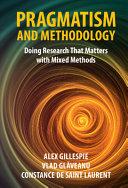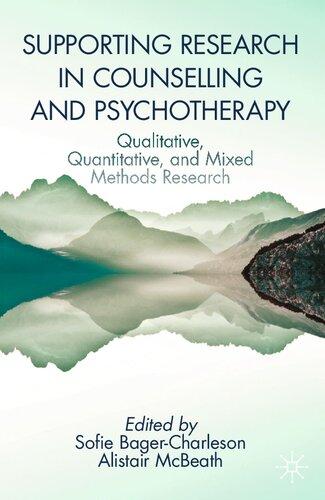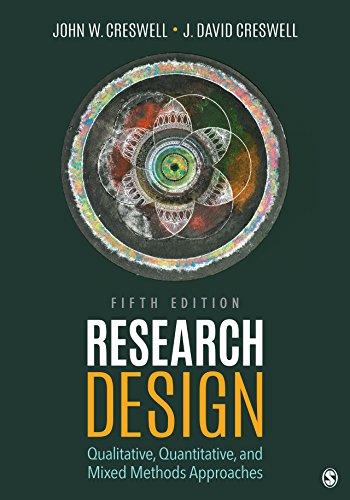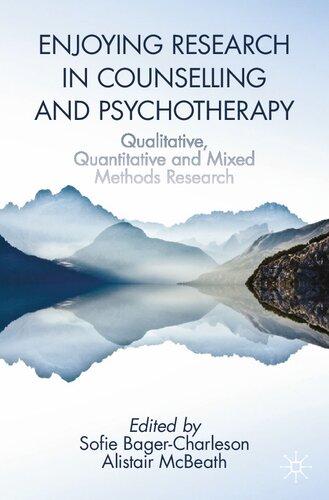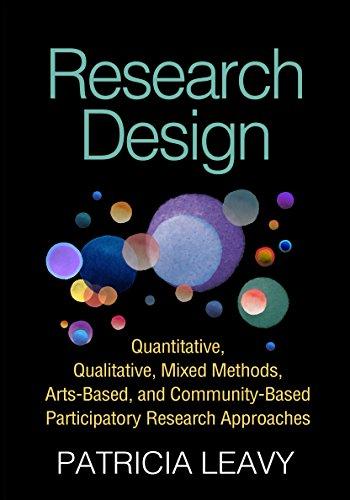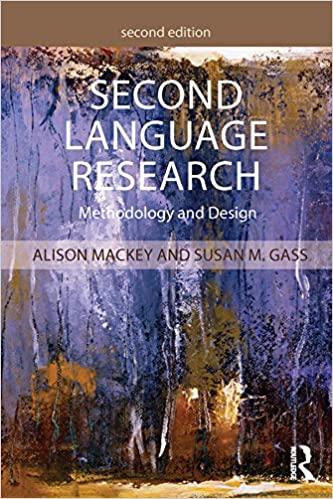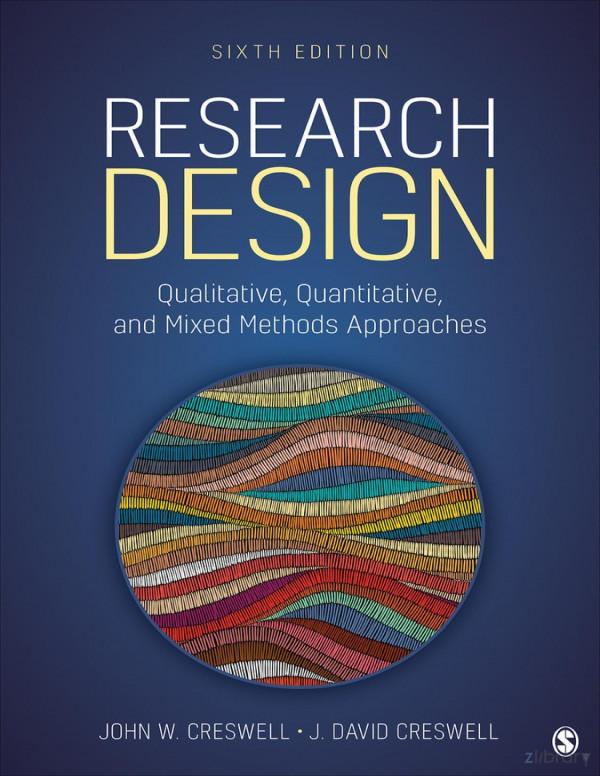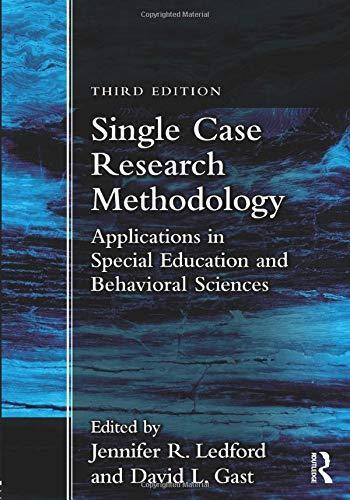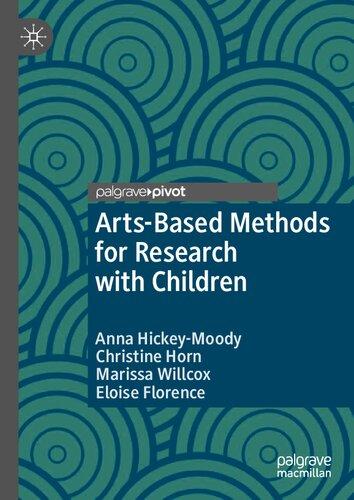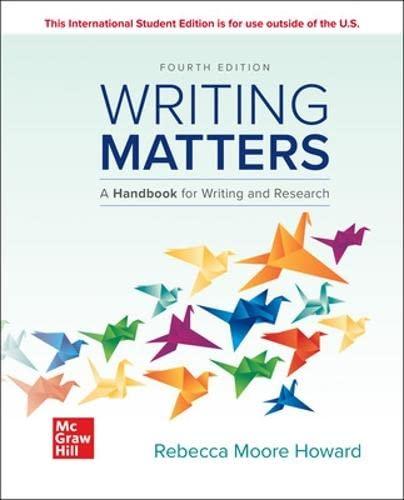PRAGMATISM AND METHODOLOGY
Doing Research That Matters with Mixed Methods
ALEX
GILLESPIE
London School of Economics and Political Science
VLAD GLĂVEANU
Dublin City University
CONSTANCE DE SAINT LAURENT
National University of Ireland, Maynooth
Shaftesbury Road, Cambridge CB 2 8EA , United Kingdom
One Liberty Plaza, 20th Floor, New York, NY 10006, USA
477 Williamstown Road, Port Melbourne, VIC 3207, Australia
314–321, 3rd Floor, Plot 3, Splendor Forum, Jasola District Centre, New Delhi – 110025, India
103 Penang Road, #05–06/07, Visioncrest Commercial, Singapore 238467
Cambridge University Press is part of Cambridge University Press & Assessment, a department of the University of Cambridge.
We share the University’s mission to contribute to society through the pursuit of education, learning and research at the highest international levels of excellence.
www.cambridge.org
Information on this title: www.cambridge.org/9781316516140
DOI: 10.1017/9781009031066
© Alex Gillespie, Vlad Glăveanu, and Constance de Saint Laurent 2024
Published with the support of the Swiss National Science Foundation
This work is in copyright. It is subject to statutory exceptions and to the provisions of relevant licensing agreements; with the exception of the Creative Commons version the link for which is provided below, no reproduction of any part of this work may take place without the written permission of Cambridge University Press.
An online version of this work is published at doi.org/10.1017/9781009031066 under a Creative Commons Open Access license CC-BY-NC 4.0 which permits re-use, distribution and reproduction in any medium for non-commercial purposes providing appropriate credit to the original work is given and any changes made are indicated. To view a copy of this license visit https://creativecommons.org/licenses/by-nc/4.0
All versions of this work may contain content reproduced under license from third parties. Permission to reproduce this third-party content must be obtained from these third-parties directly.
When citing this work, please include a reference to the DOI 10.1017/9781009031066
First published 2024
A catalogue record for this publication is available from the British Library
A Cataloging-in-Publication data record for this book is available from the Library of Congress
ISBN 978-1-316-51614-0 Hardback
ISBN 978-1-009-01378-9 Paperback
Cambridge University Press & Assessment has no responsibility for the persistence or accuracy of URLs for external or third-party internet websites referred to in this publication and does not guarantee that any content on such websites is, or will remain, accurate or appropriate.
For Alice, Arlo, Arthur, Lyla, and Zoé.
Preface
There is nothing as practical as a good theory. Lewin (1943, p. 118)
The idea that theory should be practical is both obvious and surprising. It is obvious because the avowed aim of science is to create knowledge to empower human activity (Bacon, 1620). However, theory is often associated with abstruse terms and obscure concerns (Tourish, 2020). Kurt Lewin’s (1943, p. 118) maxim that “there is nothing as practical as a good theory” has gone from being cited about ten times a year in the 1990s to nearly fifty times a year recently (McCain, 2015). This upsurge betrays the challenge of creating robust and insightful theories in social science that are also useful.
Developing useful knowledge is challenging because theory that is too practical is quickly criticized for being unsurprising, lacking intellectual depth, and merely repackaging common sense. While it is easy to do something useful (e.g., help someone, cook a meal), it is much more challenging to create helpful knowledge. Creating useful knowledge entails synthesizing prior experience and applying it to an unknown future. It means going beyond what is already done, opening the future up to more purposive human action, and, in short, expanding human agency. In this sense, useful knowledge aims to empower human action, to make the consequences of human action expected, and to avoid unwanted surprises.
We propose that pragmatism, especially as developed by the early American pragmatists (Charles Sanders Peirce, John Dewey, Jane Addams, William James, and George Herbert Mead), provides a helpful way to think about methodology in social research. It provides timely conceptions of epistemology, theory, research questions, and data that can address our current concerns. It can help us make useful knowledge that is neither naïvely realist nor impotently critical, and it can help us address the current challenges and opportunities of both big and small data.
Preface
There is an irony in the consequences of pragmatism. As an approach, it is avowedly against abstraction and abstruse theory. It argues for starting and ending with the problems of living. But the consequences of pragmatism have been mainly theoretical and philosophical rather than practical. Despite pragmatism contributing to diverse domains (Allemang et al., 2022; Ansell & Boin, 2019; Craig, 2007; Kaushik & Walsh, 2019; Kelly & Cordeiro, 2020) and being foundational to mixed methods research (Morgan, 2014a), there have been few systematic attempts to translate the philosophy of pragmatism into a consistent methodology. This book aims to bridge this gap in pragmatist scholarship by outlining the consequences of pragmatism for social research.
From a pragmatist standpoint, knowledge should be effective, insightful, and emancipatory in its consequences. We have written this book not to contribute to pragmatist philosophy but to develop pragmatism’s fruitful consequences for social research methodology. Traditionally, methods in the social sciences have been caught between realist (often quantitative) and relativist (often qualitative) tendencies. We use pragmatism to chart a course between these extremes and to produce knowledge that is both useful and critical. To this end, the book provides an end-to-end pragmatist approach to knowledge creation, spanning epistemology, theory, question creation, and the nature of data, methods of analysis, and ethics.
We are social and cultural psychologists focused on studying human activity in context, enabled by both knowledge and technology. Indeed, we use this basic orientation to understand social research activity as also being enabled by knowledge (e.g., theories, epistemology, research questions) and technology (e.g., questionnaires, interview techniques, and computational algorithms). While many of our examples pertain to social and cultural psychology, the ideas presented are broader and, we believe, have applicability across the human sciences. Specifically, this book aims to contribute to three broad debates.
1) Rehabilitating the value of useful knowledge. The so-called paradigm wars in social science have had consequences beyond academia, providing resources for “post-truth” politics. The paradigm wars related to debates between realism and relativism (often termed “constructionism”), focusing on the extent to which scientific knowledge is true versus being a human construction (Bryman, 2008). Unhelpful oppositions were created: science versus critique, realism versus relativism, and objectivity versus subjectivity. Nuanced arguments on both the realist side (Hacking, 1999) and the constructionist side (Berger & Luckmann, 1967) were oversimplified. Extreme and unrepresentative positions emerged on both sides. On the
Preface
realist side, qualitative analysis was shunned as unscientific, and on the constructionist side, quantitative analysis was resisted as naïve, uncritical, or even oppressive. Nevertheless, despite being uncommon positions, these extremes undermined science within the public domain (Onwuegbuzie & Leech, 2005) and sowed seeds of doubt that enabled inconvenient facts to be dismissed and “alternative facts” to thrive (Cooke, 2017, p. 211).
A pragmatist approach to social research acknowledges the stubborn resistance of facts and also the subjectivity and contextuality inherent in all knowledge. We argue that this approach can provide both the basis for creating common ground around effective knowledge while also avoiding science as an ideology beyond critical questioning.
2) Mixing methods. The paradigm wars drove an unhelpful wedge between qualitative and quantitative methods that had previously worked synergistically (Morgan, 2007). It was argued that qualitative and quantitative methods pertained to fundamentally different, incommensurable, epistemological frameworks (Filstead, 1979) and were “competing paradigms” (Guba & Lincoln, 1994, p. 105). While separating qualitative methods from quantitative methods enabled qualitative methods to mature independent of a quantitative framing, it had the unfortunate consequence of undermining mixed methods research. Indeed, it even became seen as potentially philosophically naïve to try and combine them (Denzin, 2012).
A pragmatist approach argues that qualitative and quantitative methods can be combined and, moreover, that they should be combined. Quantitative methods provide breadth, and qualitative methods provide depth. If both add value, why choose one over the other? The choice is false: It is more rigorous to have both breadth and depth. Together, they can make social science more robust, insightful, and emancipatory. Moreover, we will argue that mixed methods research is necessary for addressing the challenges and harnessing the potential of big qualitative data.
3) The challenge and potential of big qualitative data. Qualitative research in psychology and related disciplines is at a crossroads. On the one hand, the field has substantially increased in terms of its thematic reach – the number of studies, journals, and textbooks. However, we are living through a qualitative data explosion, with an exponential growth of digitally recorded but unstructured text, image, audio, and video data. While these data are often termed “big data,” they are also “qualitative data.” Thus, somewhat ironically, at the extreme end of quantification (i.e., big data) is qualitative data (i.e., digital text, image, video). To tackle the challenges of these data, and to make the most of the opportunities they offer for social research, we need to integrate data science (i.e., quantitative and
computational) techniques with qualitative research techniques (Bazeley, 2017; Chang et al., 2021).
A pragmatist approach suggests a novel way of mixing big data and qualitative research techniques. We will argue not only for mixing qualitative and quantitative methods side by side but also for what we call multi-resolution research, where the same data are analyzed both qualitatively (to zoom in on details) and quantitatively (to zoom out on patterns). Such analysis is possible only by reconceptualizing raw data as affording a bidirectional transformation into both qualitative and quantitative forms. Such bidirectional transformations enable a continual moving back and forth between qualitative and quantitative facets of the same dataset.
Overall, we argue that a pragmatist approach to methodology can address the challenge of creating useful knowledge, enhance the rigor and creativity of research, foster deeply integrated qualitative and quantitative methods, and avoid overly simplistic oppositions between realism and relativism. Pragmatism’s guiding insight is to consider the consequences of knowledge. This enables a realist-type analysis of the effectiveness of knowledge combined with a constructionist-type critique of who benefits from that effectiveness. The chapters in the book step through pragmatism (Chapter 1), epistemology (Chapter 2), theory (Chapter 3), research questions (Chapter 4), data collection and curation (Chapter 5), mixed methods research (Chapter 6), multi-resolution research (Chapter 7), ethics (Chapter 8), and the role of social research in enhancing human possibility (Chapter 9). The aim is to propose pragmatism as a coherent, flexible, and robust framework for creating useful knowledge that can enhance society.
Finally, in preparing this book, and in the many years of discussion that led to this book, we would like to acknowledge the intellectual support of our colleagues, including Flora Cornish, Kevin Corti, Ioana Literat, Mark Noort, Tom Reader, and Tania Zittoun. This book has been supported financially by two grants from the Swiss National Science Foundation (51NF40-205605 via “nccr – on the move” and P400PS-180686).
Pragmatism
A pragmatist … turns away from abstraction and insufficiency, from verbal solutions, from bad a priori reasons, from fixed principles, closed systems, and pretended absolutes and origins. He turns towards concreteness and adequacy, towards facts, towards action, and towards power. That means the empiricist temper regnant, and the rationalist temper sincerely given up. It means the open air and possibilities of nature, as against dogma, artificiality and the pretence of finality in truth.
James (1907, p. 51)
An originating insight for pragmatism was Charles Sanders Peirce’s (1878) argument that the truth of an idea is found in its consequences. Specifically, what we call “true” is knowledge that yields the expected outcome. This paradigmatic insight was developed in America by John Dewey (especially in psychology, education, and art; Dewey, 1922, 1934, 1958), William James (especially in psychology and philosophy; James, 1890, 1907), George Herbert Mead (especially in social psychology; Mead, 1913, 1925), and Jane Addams (especially in activism and social work; Addams, 1990, 2002). These heterogeneous scholars were united in believing that science, within the context of democracy, could improve society. Instead of searching for absolute truths, independent of humans, they wanted society to take responsibility for creating knowledge that would enrich humanity.
Pragmatism can be challenging to understand because it resists the languages of both realism and skepticism. It mixes a hard-headed focus on facts with social values, especially democracy. How can knowledge be underpinned by both truth (thought to be independent of humans) and values, such as democracy (clearly not independent of humans)? It achieves this by reconceptualizing the subject–object (subjectivity–objectivity, relativism–truth) dichotomy. This dichotomy is so fundamental to our thinking that, sometimes, pragmatism can seem contradictory. For
example, in the opening quotation James, on the one hand, looks away from final truths but, on the other hand, looks “towards facts.” This is possible because pragmatism takes time very seriously. Facts are in the past, things that happened, that cannot be undone; knowledge leans into the future and will become a fact only after its consequences are realized. From a pragmatist standpoint, truths outside of time are an illusory “quest for certainty” (Dewey, 1929). The idea of a timeless truth fails to distinguish what has happened from what might happen, and it thus suppresses our responsibility for what will happen.
In this chapter, we introduce pragmatism. First, we situate pragmatism within a process paradigm that emphasizes temporality and change, and we contrast this with approaches that prioritize timeless things. We discuss both the criticisms of pragmatism (that it is relativistic, uncritical, and behaviorist) and the benefits of pragmatism (that it enables multimethod research, creates useful knowledge, and helps generate novel theories). Finally, we distill pragmatism into eight propositions. The eight subsequent chapters will develop the implications of each one of these propositions for methodology in the social sciences.
1.1 Paradigms: “Things” or “Processes”?
According to Thomas Kuhn (1962) all sciences are embedded in paradigms that are more or less implicit. These paradigms are sets of assumptions, articles of faith, root metaphors, and themata that are taken for granted (Holton, 1975). Paradigms demarcate discontinuities in knowledge. If ideas fit harmoniously together, they are part of the same paradigm. Moving from one paradigm to another is discontinuous and often abrupt. Such paradigm shifts, or scientific revolutions, are stimulated by the accumulation of anomalies. Anomalies are observations or logical contradictions that are difficult to explain within a given paradigm. All paradigms have anomalies, and the tendency is to overlook them and focus on the affordances and successes of the paradigm (Kuhn, 1962). However, anomalies are the seeds of progress.
Ivana Marková (1982) has used the Kuhnian concept of paradigm to characterize two fundamental paradigms in psychology and the broader social sciences. The first is a mechanistic paradigm within which the world comprises “things” that subsequently enter into interactions. The second is a process paradigm within which the world comprises interactions (or experiences) and only subsequently are these decomposed into “things.” Marková calls these the Cartesian and Hegelian paradigms after their respective ancestors.
1.1.1 The Cartesian Paradigm
The French philosopher René Descartes (1641) laid the foundations for the mechanistic and deterministic paradigm. He argued that there are two separate ontological realms: res extensa and res cogitans. Res extensa pertains to all that is extended in three-dimensional space, while res cogitans refers to all the things that appear in the mind (e.g., thought, internal dialogue, and imagery) and rational thought (e.g., Pythagoras’ theorem, mathematics). Unlike res extensa, res cogitans does not have any extension in threedimensional space.
Descartes’ (1641) dualistic ontology isolated the cognitive and spiritual element within res cogitans, thus enabling scientists to study res extensa in purely mechanical terms. This separation had the benefit of isolating the soul, and thus religion, and freeing scientists up to study the natural world unencumbered by religious doctrine. It laid the foundations for material determinism: the idea that everything that has happened and will happen in the material domain is merely the unfolding of a mechanical system. PierreSimon Laplace (1814, p. 4) described material determinism as follows:
We ought then to regard the present state of the universe as the effect of its anterior state and as the cause of the one which is to follow. Given for one instant an intelligence which could comprehend all the forces by which nature is animated and the respective situation of the beings who compose it – an intelligence sufficiently vast to submit these data to analysis – it would embrace in the same formula the movements of the greatest bodies of the universe and those of the lightest atom; for it, nothing would be uncertain and the future, as the past, would be present to its eyes.
Laplace’s arresting idea was that the entire universe is like a mechanical clock – fully determined by its starting position. Thus, everything, from exploding stars to the sentences on this page, is the inevitable ticking of the mechanical universe set in motion at the start of time.
Descartes’ sharp separation between res extensa and res cogitans led, on the one hand, to the rationalistic study of ideas without extension (mathematics, geometry, logic, etc.) and, on the other hand, to the empirical sciences of things with extension (physics, biology, chemistry, etc.). Although rationalism and empiricism are often opposed (because they disagree on whether truth comes from ideas or observations), they are both mechanistic ontologies: They start with things (empirical or logical), and all interactions are secondary.
For Descartes, Truth is timeless. True logical relations do not change with time. For example, the laws of geometry are unchanging. Equally, the
human mind, he argued, does not develop. The human soul, Descartes wrote, is always conscious in any circumstance – even in a mother’s womb. Furthermore, logical relations between objects in the world, in so far as they are True, must be True for all time. Descartes’ ideas carry forward Plato’s allegory of the cave: that human experience is like the shimmering colorless shadow of an intricate three-dimensional object cast upon a cave wall by a flickering fire. Plato termed the posited Truth behind experience “natural kinds” – these are the objects that underly human experience. While experience is fallible, natural kinds are perfect and outside of time.
Much contemporary social research is within the Cartesian paradigm (Farr, 1997; Marková, 1982). This paradigm aims to identify, define, and measure “variables” (i.e., things). Only secondarily are these variables related to one another (e.g., correlations, experiments). The metaphor is Laplace’s clockwork universe, with the variables being the cogs ticking onward through cause–effect relations. When change occurs, the Cartesian paradigm searches for causal cogs. The assumption is that the change needs explanation, but the variables do not – they are taken for granted.
One anomaly in the Cartesian paradigm is development. While there are many methodologies for assessing initial states and outcomes, there are fewer methodologies for assessing what happens in between (Valsiner, 2006). The relations between independent and dependent variables are described with probabilistic statistics, but what actually occurs within any given situation is not an abstract probability. Probabilistic statistics obscure variance, thus blending various underlying processes into a single abstract and possibly nonexistent curve of probability (Fisher et al., 2018; Hayes et al., 2019). Even asking questions about what happened in a given case between input and output becomes challenging. Studying a single case is seen to be foolish because, within this paradigm, a single case does not form a probability. Thus, the actuality of an event (i.e., the case of what actually happened – a fact in pragmatist terms) is secondary to an abstraction that never occurred (i.e., the statistical model). Indeed, cases that do not fit the model (i.e., outliers) are deviations to be removed. This subordination of the actual to the abstract model is deeply antipragmatist; pragmatism puts events first and treats theories, and knowledge more generally, as fallible abstractions.
A second anomaly of the Cartesian paradigm arises in the domain of psychology. Psychology is the science of mind and behavior, with the “and” revealing the Cartesian split (Farr, 1987). On the one hand, psychology operates with an ontology of res extensa, for example, when studying the
1.1 Paradigms: “Things” or “Processes”? 5
neuroscience of the brain or the predictability of human behavior. On the other hand, it operates with an ontology of res cogitans, for example, when studying the phenomenology of human experience or the psychological dynamics of self-reflection. This oversharp separation between the mind and the world led to a psychology of mind disconnected from the body (Damasio, 2006) and from other minds (Gillespie, 2006a). The mind was marooned, cut adrift from the material and social world.
Although Descartes is too often oversimplified and blamed for the ills of contemporary thinking (Baker & Morris, 1996), his ideas did lay the groundwork for a paradigm that separates the mind from the body and foregrounds things over processes. The peculiarity of this Cartesian paradigm becomes more apparent when contrasted with the alternative, a paradigm that foregrounds processes over things.
1.1.2 The Hegelian Paradigm
The Hegelian paradigm gets its name from the German philosopher Georg Wilhelm Friedrich Hegel (1807), an early and celebrated proponent of processes. Specifically, Hegel theorized “things” as being secondary to processes, as arising within “the life of the whole”:
The bud disappears in the bursting-forth of the blossom, and one might say that the former is refuted by the latter; similarly, when the fruit appears, the blossom is shown up in its turn as a false manifestation of the plant, and the fruit now emerges as the truth of it instead. These forms are not just distinguished from one another, they also supplant one another as mutually incompatible. Yet at the same time their fluid nature makes them moments of an organic unity in which they not only do not conflict, but in which each is as necessary as the other; and this mutual necessity alone constitutes the life of the whole. (Hegel, 1807, p. 2)
Is the oak tree superior to the acorn? Which comes first? Which is right? According to Hegel, these questions do not make sense because both are phases of the same process. However, although they are parts of the same process, the acorn and the oak tree are not equivalent. There is genuine nontautological growth and transformation. Hegel wrote, somewhat flippantly, that mathematics was boring because it was all tautology; every discovery was given in advance in the axiomatic assumptions of mathematics. Equally, a mechanical clockwork universe, like mathematics, does not grow or develop; it merely rearranges. In contrast, Hegel was interested in qualitative transformation and the emergence of nontautological novelty.
Hegel’s philosophy was notoriously abstract (and, in that sense, deeply unpragmatist; James, 1882). But he needs to be understood in his historical context as trying to describe systems evolving before Darwin, systems theory, or ecological thinking. Dewey (1910b) saw in Darwin a concrete instantiation of Hegel’s process philosophy, and by combining Hegel and Darwin, he arrived at a naturalistic conception of the human mind and society undergoing continual change. That is to say, the mind and society are not outside of nature but part of it – responding, adapting, and acting within the ecology of nature. In contrast to the mechanistic stimulus–response psychology of his time, Dewey (1896) argued that perception, cognition, and action form a dynamic system of adjustment. He rejected the idea that the mind is a subjective domain observing the objective domain. He replaced this Cartesian idea with a pragmatist conception of the mind as the means through which we reconstruct our relation to the world to enable action to proceed.
Every philosophy has to start with something. Plato began with a timeless Truth “behind” human experience. Descartes began with the unquestionable Truths of rationality and geometry. Laplace began with the idea of a clockwork universe in motion. In contrast, pragmatism begins with human activity – everyday actions and experiences that comprise the world as we know it. Within ostensibly mundane daily activities, humans are in a dynamic processual relation to the world. Within daily activities, knowledge is successfully created and used, and the debate between timeless Truths and solipsistic skepticism dissolves (James, 1912). While Plato and Descartes chose to build their systems of knowledge on something outside human experience, pragmatism chooses to build knowledge from within the experience of mundane human interaction. Human experience arises when we interact with the world or other people.
The idea of taking interactions (or processes) as foundational, as the basic unit of analysis, is not unique to pragmatism. It is evident in a range of domains, including studies of language, evolutionary and ecological theory, and complex systems theory.
In terms of language, Bakhtin’s (1981) contributions are clearly within a process philosophy. He conceptualized language and texts as living, dynamic, and contextual. A paradigmatic orientation is especially evident in Bakhtin’s (1986) criticism of Saussure. Saussure (1916) sought the structure of language (langue) “behind” the concrete manifestations of talk (parole). For Saussure, the aim was to identify the abstract rules that could explain language use in everyday life. More recently, Chomsky (1995) has sought to identify a universal grammar underlying all human languages.
In contrast, Bakhtin, operating within a process paradigm, argued that langue was an abstraction, and instead, the bedrock reality of language was parole – how language is used in daily life and how it varies between contexts (Linell, 2009). Everyday language use, Bakhtin argued, is not a pale reflection of a more abstract Truth; rather, it is language in process –grounded in the past, adapting to new contexts, and becoming the language of tomorrow.
In terms of evolutionary and ecological theory, process philosophy is pervasive, if often implicit. This point was made in philosophy by Dewey (1910b) and was developed in psychology by Werner (1957), among others. Where Hegel had the idea of things evolving and changing, Darwin’s theory of evolution by natural selection made the idea of evolution concrete; it showed how species, and even humans, were within a process of change. More recently, Deacon (2011) contrasts engineering logic (a Cartesian paradigm that builds things up from parts) with organic (biological) logic (a Hegelian paradigm in which the parts are differentiated within a functional whole). Humans, Deacon argues, are not created by assembling hearts, lungs, and limbs together – like Frankenstein’s creation. Human life begins with cell differentiation and the progressive specialization of cells, which functionally differentiate within the whole of the emerging organism. The “parts” of an organism, like the parts of an ecosystem, become what they are through their functional role within the larger system.
Finally, complexity theory studies complex, especially dynamic, systems (Byrne & Callaghan, 2013). It is closely related to evolutionary and ecological thinking, but it takes more inspiration from mathematics (Kauffman, 1996). It is often applied beyond biology, for example, to understand cellular automata, turbulence, and weather systems. Increasingly, it is used to understand human psychological (Guastello et al., 2008) and societal phenomena (Page, 2015). The basic idea is that numerous elements interacting produce higher-level phenomena that are more than the sum of the elements (e.g., rivers are more than water molecules, the mind is more than the cortex, and society is more than individuals). Complex systems have emergent phenomena, such as attractors (e.g., a whirlpool), and qualitative phase shifts (e.g., water becoming ice). Complexity theory is an example of a process paradigm because these higher-level phenomena emerge from the interactions of component elements.
Pragmatism has an affinity to any tradition that emphasizes “processes” over “things” and takes change and development seriously – whether it is the development of language systems, biological systems, or any other
complex systems. The elements can be diverse (words, people, species), but they are all situated within larger systems (language, societies, ecosystems). The key is that the elements are not timeless but developing; not definable in isolation but definable in terms of their functional role within the system; and not hidden “behind” what is going on but are what is going on.
1.2 Pragmatism: Knowledge within Human Activity
Early American pragmatism was a response to relativism (or skepticism), which itself was a response to naïve realism. From a realist standpoint, Truth is independent of humans: timeless, hidden “behind” the blooming buzzing confusion of experience awaiting “discovery.” The skeptical reaction to this is that humans “construct” knowledge; it is created through social and discursive processes and ceases to exist when the supporting social processes wane. History, the skeptics observe, is littered with the vestiges of so-called timeless truths, each bound to a civilization, culture, or research paradigm.
Pragmatism is often misunderstood because it transcends this debate between realism (there are infallible timeless Truths) and skepticism (all knowledge is uncertain). It is unusual because it subscribes to both fallibilism and antiskepticism (Putnam, 1995). It agrees with the skeptics: There is no guarantee that any theory is timeless and will not need revision. But it also agrees with the realists: Just because knowledge can be doubted, it does not mean that all knowledge should be doubted equally.
Pragmatism proposes that knowledge is neither purely a function of the world (realism) nor of humans (skepticism). Instead, knowledge is an interaction between humans and the world. The term “pragmatism” comes from the Greek pragma meaning “deed” or “action.” The core pragmatist idea is that the opposition between subject and object, or representation and reality, should be replaced with activity and experience (which binds the subject and object together). Pragmatism is a process paradigm because it starts with the dynamics of experience and activity.
To understand how pragmatism can be both fallibilist and antiskeptical, it is necessary to return to the subject–object dualism. Descartes institutionalized this dualism, which now permeates the social sciences and modern thinking (Latour, 1993). However, it is a loaded and oversimplistic opposition that leads us to pigeonhole theories as belonging to either the subject or the object side of the dualism. It creates a host of anomalies, especially for psychology, which aims to be an objective science of subjectivity.
1.2.1
Beyond Subject and Object: The Truth Is in the Future
At the heart of pragmatism is a reconceptualization of Descartes’ infamous distinction between subject (res cogitans) and object (res extensa). This distinction is central to a correspondence theory of Truth: Does the image in the mind of the subject mirror the object out in the world? Such a “mirror theory” of truth pervades naïve realism (Rorty, 1981). Pragmatism reconceptualizes the distinction between subject and object and, in so doing, reconceptualizes the nature of truth.
Although the Cartesian separation between subject and object looks clear-cut, in practice it is messy. Dewey (1905, p. 230) identifies this anomaly using the example of awakening to a scary sound:
I start and am flustered by a noise heard. Empirically, that noise is fearsome; it really is, not merely phenomenally or subjectively so. That is what it is experienced as being. But, when I experience the noise as a known thing, I find it to be innocent of harm. It is the tapping of a shade against the window, owing to movements of the wind. The experience has changed; that is, the thing experienced has changed not that an unreality has given place to a reality, nor that some transcendental (unexperienced) Reality has changed, not that truth has changed, but just and only the concrete reality experienced has changed.
This seemingly innocuous example poses a problem. Is the scary perception subjective, while the chaffing shade is objective? The problem is that the frightening perception did not feel subjective in the moment. And what if there really was a burglar at the window? Then, would the chaffing shade now become subjective? Dewey’s point is that assigning experiences to subjective or objective domains is unhelpful and muddled because the raw experience, in the moment, is equally real in all cases.
[There] is no reason for assuming the content of one [experience] to be exclusively ‘real’ and that of others to be ‘phenomenal’[.] [W]e have a contrast, not between a Reality, and various approximations to, or phenomenal representations of Reality, but between different reals of experience.
(Dewey, 1905, p. 227)
Dewey argues that the first experience (the scary noise) is no less real than the second (the chaffing shade); both empirical experiences are equally real experiences. What differentiates them is in the future (whether there was anything more than the chaffing shade). As experiences accumulate, one experience may supersede the other at the level of understanding, as a theory of the world, setting an expectation for how to act next – which in turn may be superseded (see Chapter 2).
We often use the term “subjective” to talk about an action that has become uncertain, where expectation has been surprised. Within this disruption, the path of action is no longer obvious, decisions have to be made, and options have to be weighted against one another (e.g., to go back to sleep or to investigate the noise). In such scenarios, what seems objective at time one becomes subjective at time two and vice versa. Thus objectivity and subjectivity cannot exist side by side in different ontological realms; instead, they are sequentially related as different phases of human activity, with the former being a taken-for-granted activity and the latter being an activity that has become problematic. The critical point is that both subject and object become differentiated within the activity.
Another anomaly of the subject–object dualism can arise between people (Mead, 1932). Consider a neuroscientist examining the brain of a patient using an advanced scanner. The screen shows the topography of the brain, where the blood flows, and thus the loci of cognitive activity. It is seductive to conceptualize this as the “real” or “objective” basis of the patient’s experience; or, put another way, what is real is the blood flow, while the patient’s experience is merely subjective. But the anomaly arises when we take a step back: Is the neuroscientist’s assessment of the scan also merely subjective? Is the blood flow merely a perception in the neuroscientist’s brain? If so, this could only be detected by a second neuroscientist examining a brain scan of the first neuroscientist. But, again, this examination would be a mere subjective experience, and so on, ad infinitum. The point is that the patient’s experience is as real as the neuroscientist’s experience; the only difference is that they are in two different bodies coupled with a belief system that privileges one experience over the other.
Pragmatism reconceptualizes the subject–object dualism by taking a naturalistic stance. Building on the ideas of Darwin, pragmatism argues that all human activity (including mental activity) is part of nature (Dewey, 1922; Mead, 1932). Thinking and collective inquiry (e.g., science) are not outside of nature, observing it, but part of the interactions that comprise nature. The term “naturalism” denotes the fact that experience (including empirical observation) does not “give access to” nature but rather is part of nature (see Chapter 2). Thus, “experience” is not a subjective quality; it is a real relation to the world that is part of the world. This overcomes the problematic idea that the subjective is outside the objective, observing it.
Pragmatism’s primary unit of analysis is interaction, variously called “acts” (Dewey, 1896), “experience” (James, 1912), “social acts” (Mead, 1912), “perspectives” (Mead, 1926), and “transactions” (Dewey & Bentley, 1946). These terms overcome the subject–object dualism because both
subject and object are derivative of these experiences, acts, or transactions. An experience is holistic, and a conceptual act is required to differentiate subject and object within the experience. From the standpoint of an observer (either a third party or observing one’s past self), it is tempting to say that subject and object meet in experience – that experience is a fusion of subject and object, a view on the object tainted by subjectivity. But from the standpoint of the experience, there is only that which is experienced. The experience is primary, and any differentiation of subject and object is secondary. Pragmatism is firmly rooted in the primary moment of experience – conceptualized as a dynamic moment of activity. For this reason it has been variously described as “immediate empiricism” (Dewey, 1905), “radical empiricism” (James, 1912), and “empirical naturalism” (Dewey, 1958).
The problem with trying to locate the experience in subjectivity (res cogitans) is that it gets marooned there; then all experience becomes merely subjective, and the anomaly of “objective” observation rises again. This leads to a foundational philosophical problem: How can we reliably know anything? The realist argues that we can distinguish what is “in the mind” from what is “in the world.” The relativist counters that because things at time one are “in the world” and at time two are “in the mind” (e.g., spontaneous generation, phrenology), it must all be in the mind. The pragmatist makes a more fundamental point: Both the realist and the relativist are arguing the two sides of Descartes’ problematic dualism. Pragmatism aims to transcend this dualism, and the associated anomalies. It does this by holding on to the “reality” (with a small “r”) of experience while rejecting the spurious distinction between “timeless Reality” (with a capital “R”) and human subjectivity.
Experiences are real; they can be expected or unexpected, desirable or undesirable. Believing that the wall one is walking toward is subjective will lead to a bruising encounter. This means that we can talk about false beliefs as beliefs that produce an unexpected outcome. False beliefs, just like true beliefs, are consequential, and it is the future consequences that will definitively distinguish them. Pragmatism eschews timeless Truth (with a capital “T”) in favor of a future-oriented truth (with a small “t”). James (1907, p. 201) writes: “The truth of an idea is not a stagnant property inherent in it. Truth happens to an idea. It becomes true, is made true by events. Its verity is in fact an event, a process.” In this sense, truth exists in the past; in the present is experience and in the future is uncertainty.
Rorty (1982, p. xxix) pointed out that the sentence “it works because it is true” is equivalent to the sentence “it is true because it works.” He
argued that this equivalence reveals that “truth” is nothing more nor less than the demonstration of truth. Truth is not inherent and timeless; it merely expresses confidence about the next test. Although abandoning the idea of a Truth independent of its testing might seem to be a step too far toward relativism, it is actually how science (in a positivist sense) proceeds. Pragmatism is essentially a formalization of science (e.g., postulating hypotheses and testing them) that, like science, subordinates all theories to the next test.
Knowledge, according to pragmatism, is a promise that is more or less justified. It does not abandon truth; it defers it. Pragmatism is an attempt to learn from past events, to extrapolate from the past toward a future that is unknown. And who would claim that the future holds no surprises? To talk about our theories being True and timeless is hubris in the face of infinity. To quote James (1907, p. 207) again: “Truth lives, in fact, for the most part on a credit system. Our thoughts and beliefs ‘pass’, so long as nothing challenges them, just as banknotes pass so long as nobody refuses them.” But, just like the credit system, the edifice is unstable, and the parts are liable to collapse when the future that we expected is not the future that we get.
1.2.2 Starting from Where We Are
Every philosophy requires a starting point, and pragmatism starts from where we are. Descartes (1641) sought a single unquestionable Truth from which to rebuild all knowledge. He found his Archimedean point in his indubitable doubting (“cogito, ergo sum,” “I think, therefore I am”) and the rational Truths of mathematics (e.g., Pythagoras’ theorem). Pragmatism, in contrast, does not have an Archimedean point of absolute certainty. Instead, it starts from the dense web of mini truths and practical realities that constitute everyday life. As Toulmin (1992, p. 179) wrote: “[T]he only thing we can do is make the best of starting with what we have got, here and now.”
The naïve realist idea that there is a singular, beautiful, and timeless Truth waiting to be “discovered” behind human experience is seductive but blinding (Midgley, 2003). This beguiling idea is an assumption, not an empirical experience; it is grounded in metaphors (e.g., deterministic clocks, mirrors of truth, laws of nature) and allegories (such as the forms casting shadows on Plato’s cave). Instead of building science upon such metaphors and allegories, pragmatism takes a more cautious approach, arguing that we should start with the empirical (i.e., experiential) reality of
our situation, namely the here and now, including the bricolage of ideas, heuristics, and tools that have got us this far. Instead of building knowledge on some utopic but unknowable (and thus uncertain) foundation, pragmatism builds knowledge on the messy but familiar foundation of everyday life. Despite being imperfect, this web of practices has the advantage of being honed over millennia. Pragmatists celebrate this bricolage of mini truths and context-dependent heuristics. This is in stark contrast to Descartes, who sought well-planned and rational knowledge.
The buildings undertaken and carried out by a single architect are generally more seemly and better arranged than those that several hands have sought to adapt, making use of old walls that were built for other purposes. Again, those ancient cities which were originally mere boroughs, and have become towns in process of time, are as a rule badly laid out, as compared with those towns of regular pattern that are laid out by a designer. (Descartes, 1637, p. 15)
Descartes wanted to use his Archimedean point of unquestionable Truth as a foundation for rebuilding all knowledge. He sought an orderly, internally consistent, and superficially “more seemly” body of knowledge. But nearly 400 years later, we still only have, as we have always had (and probably always will have), an unruly, context-dependent, and deeply organic bricolage of knowledge. While Descartes would be dismayed, pragmatists are unsurprised. We should evaluate knowledge not in terms of how well laid out it is but in terms of how empowering it is. What does it enable people to do?
The pragmatist approach has no grand ambition to reconstruct all knowledge. Instead, it seeks local fixes and incremental improvements. As Ansell and Boin (2019) describe, pragmatism aims to repair the ship while at sea. It respects what is and focuses on what is problematic. It evaluates knowledge piecemeal in terms of its function, consequences, and potential. The aim is only to improve upon the knowledge we have. This makes pragmatism deeply consonant with science. Science is not about making grand narratives, holding nonempirical assumptions as unquestionable, or seeking timeless Truths. Science uses empirical methods to solve problems, address predicaments, and develop useful knowledge; it is a method of continual refinement (Midgley, 2003).
Like the earth itself, human knowledge is suspended in space without foundations. But this does not detract from its remarkable, intricate, and contextual refinement. Knowledge grows, not by finding foundations but by continually challenging, revising, and weaving an ever-denser web. Knowledge grows because it is woven into the warp and weft of practical
activity. It is tested and tuned each time we experience the consequences of our actions. Our knowledge is robust because it does not rely upon any singular foundation. It is a web spun by trillions of action-consequence loops, and like any web, there is no singular point of failure. Midgley (2003, p. 26) asks: Why do “we choose to represent the development of our knowledge always in terms of building,” with the assumption of needing good foundations, “rather than, for instance, of an interaction with the world around us, leading to growth”?
For those in search of timeless Truths and indubitable foundations, the pragmatist paradigm can be unsettling. It can seem, James (1907, pp. 260–261) writes, that knowledge is “adrift in space, with neither elephant nor tortoise to plant the sole of its foot upon. It is a set of stars hurled into heaven without even a centre of gravity to pull against.” But knowledge from a pragmatist standpoint has an anchor, namely, human activity. Holding firm to human action, knowledge can be evaluated as effective or ineffective, as insightful or mundane, and as empowering or disempowering.
1.2.3 Navigating Rupture and Surprise
The social world is not stable or timeless; history continues to be made, and knowledge must continue to adapt (Power et al., 2023). New technologies, societal challenges, and scientific breakthroughs disrupt our expectations. Technologies we take for granted did not exist a generation ago. Moreover, many of the challenges we face are partly a product of these technologies (e.g., climate change, inequality, and sedentary lifestyles). Consequently, many contemporary research questions could not have been asked a generation ago (e.g., reducing polarization online, algorithmic bias, and the impact of social media on the formation of teenage identities). Given our dynamic social world, the idea of timeless Truths is, at best, simplistic and, at worst, risks blinding us to our responsibility for creating tomorrow’s truths (and problems).
Pragmatism is well suited to understanding crises, ruptures, and uncertainty (Rorty, 1989). Indeed, it conceptualizes knowledge as a means for handling uncertainty (Dewey, 1929). Human knowledge aims to make the world predictable, explainable, and actionable (Ansell & Boin, 2019). The only facts we have are in the past; the future is an expectation awaiting disruption. What happens will establish the truth of our expectations. However, hindsight is of little use. Knowledge is a crystallization of past experiences and events that did happen, into extrapolations and generalizations that help us to navigate what might happen (Peirce, 1955). From a
pragmatist standpoint, knowledge is akin to a map used to choose a path into the future. But no map is perfect: The route is not the journey.
The pragmatist approach to uncertainty is similar to Friston’s (2010) unifying theory of active inference. This theory proposes that all living structures (from cells to animals and societies) aim to reduce surprise. Disruptions imply a disconnect between the environment and how it is represented. Learning is an attempt to reduce future surprises. All living systems have a boundary between themselves and a broader environment. In so far as the environment determines the fate of an organism, the survival of the organism depends upon modeling and, thereby, mastering the environment. But the action of the organism also shapes the environment. There is a bidirectional relationship: The environment, via sensation, shapes the organisms’ representation; this representation, via action, shapes the material and social environment (Constant et al., 2019). Thus, at the heart of life are action-oriented representations of the environment that, through loops of sensation and action, work to minimize future surprises. Although the theory of active inference underplays the vital role of culture in channeling human thought and action (Clark, 2018), it nevertheless provides a unifying account of life as reducing the uncertainty of the future.
The inherent contingency and uncertainty of the human enterprise should not provoke despair. Instead, it should motivate a pragmatist stance. Useful knowledge, which empowers humanity, can reduce future surprises, enabling us to become more resilient and responsible participants in creating the future. We are not passive in the face of the future: We ensure our roofs are watertight, we check the weather forecast, and we carry umbrellas. Maybe our roof has a leak, the weather forecast will be wrong, or the umbrella is broken, but these uncertainties do not stop us.
For pragmatism, mental life begins with the surprise of disruption. Indeed, mental life is described as navigating big and small surprises. Consider Peirce’s (1878, p. 289) example of paying for a taxi:
I pull out my purse and find a five-cent nickel and five coppers, I decide, while my hand is going to the purse, in which way I will pay my fare. … [I]f there is the least hesitation as to whether I shall pay the five coppers or the nickel (as there will sure to be, unless I act from some previously contracted habit in the matter), though irritation is too strong a word, yet I am excited to such small mental activities as may be necessary in deciding how I shall act. … Images pass rapidly through consciousness, one incessantly melting into another, until at last, when all is over – it may be in a fraction of a second, in an hour, or after long years – we find ourselves decided as to how we should act.
The human mind is merged into activity most of the time. When gazing out of the taxi window or when exiting the taxi, there is no experience of a subject–object dualism. There is merely acting-in-the-world. However, when activity breaks down, when habit or expectation fails, when a genuine decision arises, or when the stimuli are uncertain, then what we term “mind” springs to life (Dewey, 1896; Gillespie, 2005a). Such experiences of disruption were also analyzed by Mead (1903, pp. 101–102), who developed the idea further.
The kaleidoscopic flash of suggestion, and intrusion of the inapt, the unceasing flow of odds and ends of possible objects that will not fit, together with the continuous collision with the hard, unshakable objective conditions of the problem, the transitive feelings of effort and anticipation when we feel that we are on the right track and substantive points of rest, as the idea becomes definite [… this is the] disintegration and reconstitution of the stimulus.
When action is blocked, for example, the door does not open, there is a kaleidoscopic flash of suggestion: Is it push or pull? Is the door jammed or locked? Is it a practical joke or might it work if I try again? As the stream of consciousness flows between the possibilities, and action follows to test each option, this is not so much representation colliding with nature, as it is the “disintegration and reconstitution of the stimulus.” That is to say, what is happening is the reconstruction of the world, both on the objective side (when the door opens) and on the subjective side (in navigating the options). The problemsolving is as much part of nature as the door opening (or not). And the same applies to science. When problems arise, science works to redefine the stimulus (e.g., reconceptualize disruptive data) so that action can proceed.
The logical conclusion of naturalizing beliefs and theories is radical: Thinking, and by extension the scientific process, is a growth within the natural world. This is why James (1907, p. 259) describes the universe as “unfinished, growing in all sorts of places, especially in the places where thinking beings are at work.” Similarly, Mead (1932, p. 175) wrote: “[T]he psychological process is an instance of the creative advance of nature.” Thus, in pragmatism we find Hegel’s idea of nature and history being in process. And by overcoming Descartes’ dualism, pragmatism returns the mind to nature. Thoughts, movements of the mind, regardless of how small, are part of nature reorganizing itself.
1.3 Potential Criticisms
There are three broad criticisms of pragmatism: that it is relativist, naïvely uncritical, and overly behaviorist. In this section, we address each criticism in turn.
